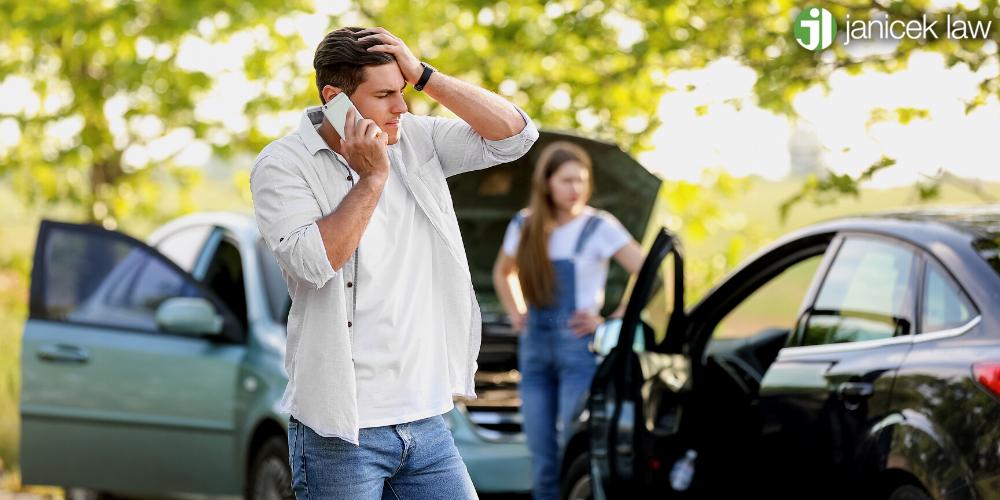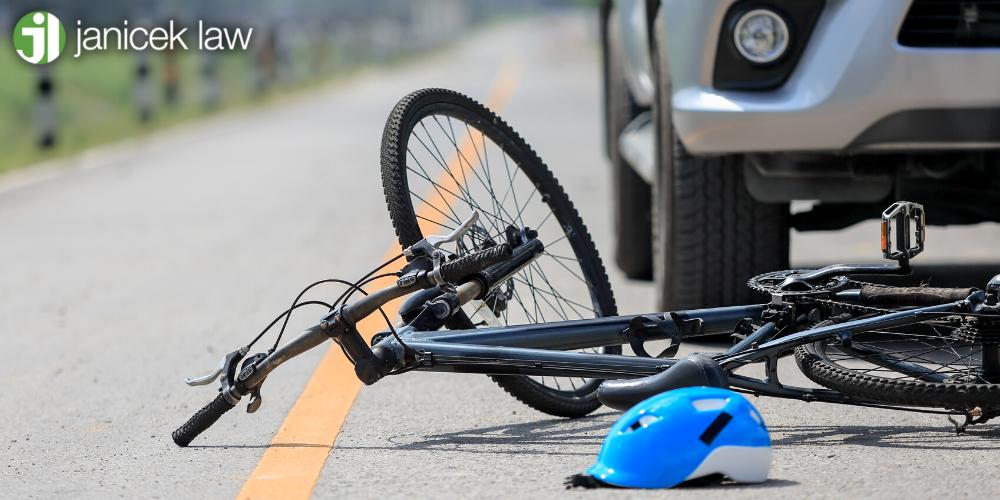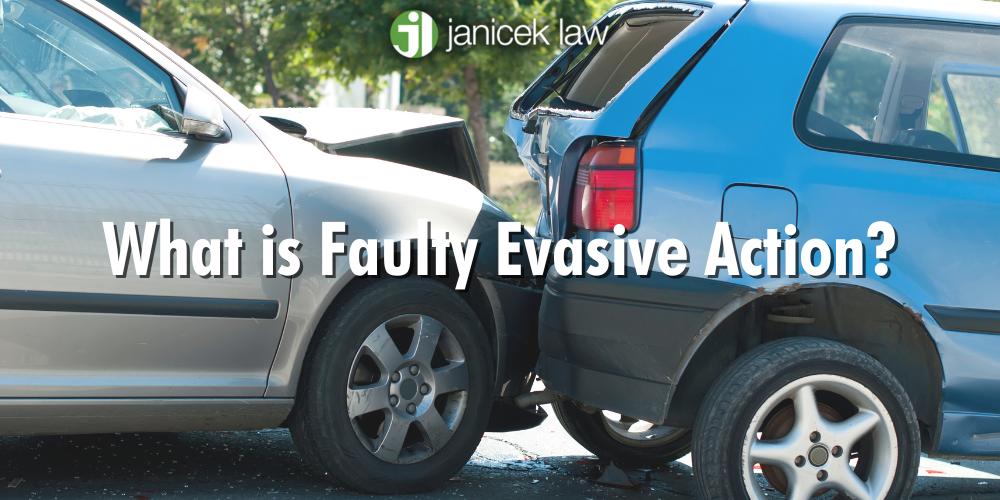Under Texas law, faulty evasive action occurs when a driver tries to avoid a car accident in the fastest way, often putting other drivers at risk. A truck driver or motorist who loses control while swerving into oncoming traffic or turning the steering wheel too sharply may end up colliding with other drivers, pedestrians, or objects. Poor evasive driving techniques, such as threshold braking, can make a situation worse. Many factors contribute to these collisions, including speed limits, road conditions, and distractions like a cell phone. In an intersection, a driver who slams the brake pedal at a red light or jerks the wheel sharply in the opposite direction may cause a multi-car accident. Instead of panicking, drivers should take reasonable steps to stay alert, anticipate potential hazards, and practice safe evasive action to reduce the risk of a collision. If you were involved in a crash caused by an evasive action gone wrong, the San Antonio personal injury lawyer team at our law firm can help determine liability and seek compensation.
If you’ve sustained a serious injury or lost a loved one, call 210-366-4949 to schedule a free consultation with our San Antonio catastrophic injury lawyers.
Evasive Action Meaning
Evasive action refers to a fast maneuver a driver takes to avoid a collision or other cars in traffic. This can include swerving the steering wheel, quickly braking, or accelerating in the opposite direction to escape the situation. In some cases, drivers may use advanced techniques like a J-turn or threshold braking to regain control of their vehicle. However, faulty or incorrect evasive action—such as overcorrecting or turning the wheel too sharply—can cause a car accident, especially at an intersection. To drive safely, motorists must stay aware of potential hazards and follow Texas law to minimize the risk.
What is Faulty Evasive Action?
Faulty evasive action – also known as inadequate evasive action or failure to take evasive action – is a type of driving behavior characterized by the failure to avoid a collision with another vehicle. In other words, failing to take evasive action means that a car or truck driver saw a potential danger on the roads and did absolutely nothing to avoid it. Evasive driving maneuvers could be quickly hitting the brakes or turning the steering wheel sharply in order to avoid a car accident.
For example, let’s say two cars are at a four-way intersection with stop signs. Driver 1 conveniently runs out of gas in the middle of the intersection as they were on the way to the gas station and almost made it before their car stopped running. Driver 2 is panicking and speeding because they’re late for work while simultaneously checking their cell phone. So Driver 2 runs the stop sign, and their front end collides into the side of Driver 1’s vehicle in the middle of the intersection. This is called a T-bone collision.
This accident was completely avoidable. Driver 1 could have seen Driver 2 sitting in the middle of the intersection from possibly over 1,500 feet away, giving them plenty of time to take a number of different evasive driving maneuvers: slowing down, swerving or slowly going around the car, or even turning down a different street entirely to avoid the car. And yet, because they were panicking, speeding, and distracted by their phone, they failed to take reasonable steps to avoid a foreseeable collision.
Common Evasive Actions in Texas
Common evasive actions in driving are maneuvers taken to avoid a collision or other potential hazards on the road. These include:
- Emergency Braking – Applying brakes suddenly to stop or slow down quickly.
- Swerving – Quickly steering to one side to avoid an obstacle or vehicle.
- Evasive Steering – Making a controlled, sharp turn to avoid a crash without losing control.
- Accelerating – Speeding up to escape a potential collision, such as avoiding a merging vehicle.
- Lane Changing – Quickly but safely shifting lanes to avoid an impending hazard.
- Controlled Skidding – Managing traction loss by steering into the skid to regain control.
- Using the Shoulder – Moving onto the road shoulder to avoid a crash when no other options are available.
- Backing Up Quickly – Reversing to escape, such as avoiding an out-of-control vehicle.
- Using Horn and Lights – Alerting other drivers with honking or flashing headlights to prevent an accident.
- Positioning for an Exit – Anticipating a hazard and maneuvering toward an open space to escape.
Drivers must use evasive action carefully to avoid causing a secondary accident or losing control of their vehicle.
Can a Driver Be Held Liable for Faulty Evasive Action in Texas?
Yes, a driver can definitely be held liable for faulty evasive action in Texas. This is because Texas is an at-fault state, which means that the at-fault driver’s insurance company has to cover all the damages of the other drivers involved.
Texas also follows a modified comparative fault rule with a 51% bar when at least two cars share percentages of fault in a car accident. If insurance adjusters find you to be less than 51% at fault for an accident, you can still recover compensation for vehicle damage, medical bills, and lost wages. However, if you’re found to be more than 51% at fault for an accident, you cannot recover compensation for any damages.
In the previous example, Driver 1 may be assigned a very small percentage of fault for continuing to drive their vehicle on an empty tank and failing to drift off to the side of the road if they felt their car shut down. Meanwhile, Driver 2 clearly shares the vast majority of the fault for the accident. Not only did they completely violate traffic laws by running a stop sign, but they were also driving recklessly with distractions. And finally, Driver 2 failed to take reasonable steps to avoid a collision.
Taking evasive action while driving is a clear violation of the duty of care that every driver on the road is expected to uphold. If everyone failed to practice evasive driving, then there would be car accidents left and right.

How Proper Evasive Actions Can Prevent A Car Accident
“Proper” is a keyword here. Drivers can take radical evasive action and make the entire situation worse. For example, maybe a driver’s knee-jerk reaction to avoid a large object in the road is to sharply swerve which makes them lose control of their vehicle and spin into oncoming traffic.
In many cases, proper evasive action is simply paying attention to all surroundings while driving, and braking to avoid potential hazards. This will lower anyone’s daily risk of colliding with other drivers.
If you’ve been injured, contact our San Antonio car accident lawyers to learn more.
Evasive Driving Tips
It is part of your individual duty of care to drive safely and avoid accidents where you can. Below, we list the best evasive driving techniques that can lower everyone’s risk of crashes, injuries, and even death.
Watch for Brake Lights to Avoid Rear End Collisions
One of the first things we learn in driver’s ed is to watch for dangerous conditions, cars, or other obstacles at least 15 seconds in front of the vehicle. This includes watching for other cars’ brake lights 15 seconds ahead of you, at an upcoming red light for example. This will give you plenty of reaction time to slow down and stop. Our brains can send signals to our feet to hit the brake pedal in less than 1 second, but sometimes this is still not quick enough to avoid an accident.
If you’ve been injured, contact a San Antonio rear end accident lawyer.
Look for Pedestrians
Drivers should always stay alert and scan the road or parking lot they’re driving in for speed limits, traffic signs, pedestrians, cyclists, obstacles, etc. Constantly being aware of danger on the roads is a crucial aspect of proper evasive driving. That way, you can make a quick maneuver if necessary, such as braking or swerving.
If a car hits you, whether on the roads or in a parking lot, contact our San Antonio pedestrian accident lawyers for a free consultation.
Avoid Distracted Driving
Distracted driving is a leading cause of car accidents in Texas, as it takes a driver’s focus away from the road and increases the risk of a collision. Common distractions include texting, eating, or interacting with a passenger in the back seat. When a driver is not paying attention even for a short period, they may fail to see stop signs, red lights, or other vehicles, leading to a serious crash. In an at-fault state like Texas, a distracted driver can be held liable for failure to take evasive action and violating traffic laws. To drive safely, motorists should stay aware, follow speed limits, and avoid distractions to prevent accidents.
If you’ve been injured by a distracted driver’s failure to take evasive action, contact a San Antonio distracted driving attorney for a free consultation.
Avoid Truck Driver Blindspots
Avoiding truck driver blind spots is crucial for drivers to prevent collisions and stay safe on the road. Large trucks have significant blind spots on the front end, rear, and both sides of the truck, making it difficult for a truck driver to see other drivers. If a truck driver lingers in these areas, the truck driver may not notice other drivers when changing lanes or making turns. To drive safely, drivers should stay out of blind spots, avoid sudden movements, and pass the truck driver carefully to reduce the risk of an accident.
If you’ve been injured because a truck driver failed to take evasive action or lost control of their truck, contact an experienced San Antonio truck accident lawyer.

Legal Assistance for Poor Evasive Action in San Antonio, TX
If you or a loved one has suffered personal injury or wrongful death in a car accident in Texas, you may have grounds to take legal action. Not only do San Antonio car accident lawyers at Janicek Law have extensive knowledge of Texas driving laws, but they also have decades of combined experience in fighting for the justice of crash victims.
Call 210-366-4949 to schedule a free consultation at our law firm today.

